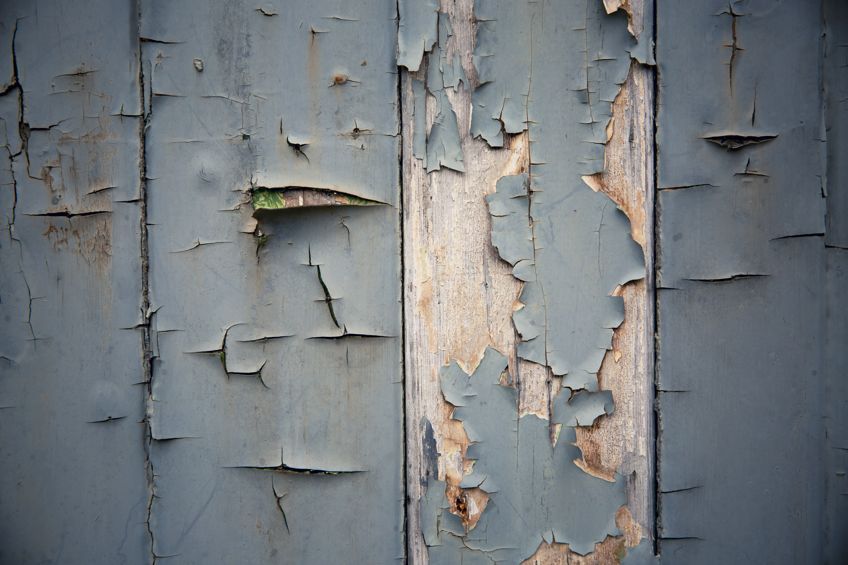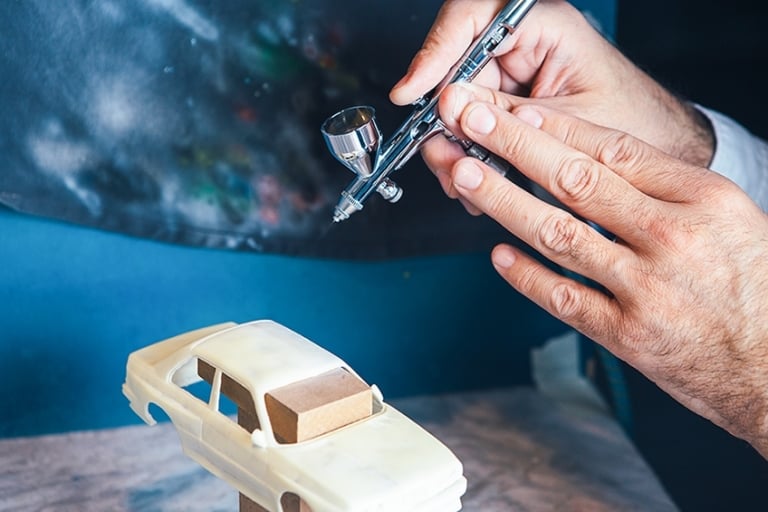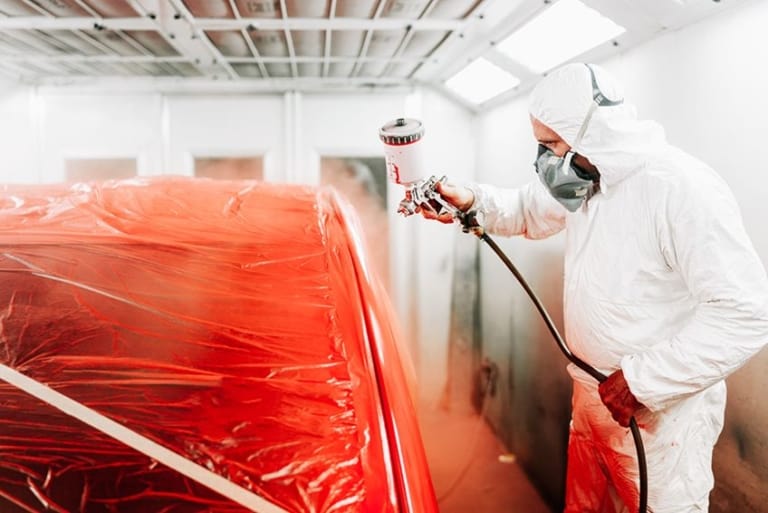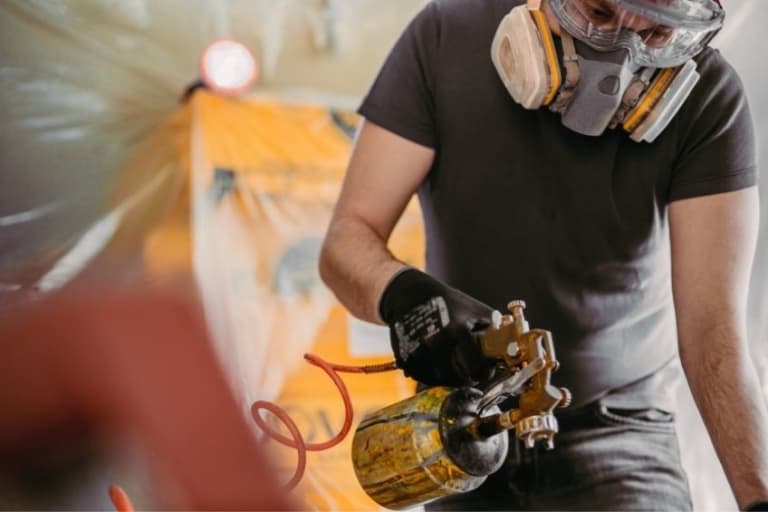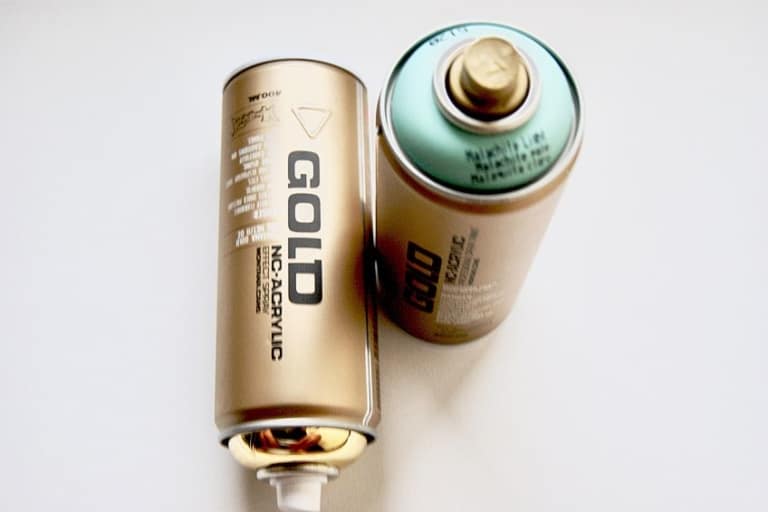How to Remove Latex Paint – Your Guide to Old Latex Paint Removal
Disclosure: There are some affiliate links below and I may receive commissions for purchases made through links in this post, at now additional cost for you.
Latex paint is much like acrylic in that both are water-based. The main difference between these two paint types is the quantities they are available in. The best thing about latex paint is that it dries quite quickly and is available in many different types of finishes. Like with any paint job, the risk of an accidental spill on your carpet or beautiful wooden floors or even on a window is possible, and this is why learning how to remove latex paint is a good idea, even before the accident happens! We will explain the various methods of latex paint removal, how to remove latex paint from wood and wooden furniture, as well as mention latex paint strippers available to you. Cleaning latex paint need not be a hassle!
Table of Contents
- 1 How to Remove Latex Paint
- 2 How to Remove Latex Paint from Wood
- 3 Important Safety Tips When Using Latex Paint Remover
- 4 Your Guide to Removing Latex Paint Stains
- 5 Hints and Tips for Latex Paint Removal
- 6 Frequently Asked Questions
How to Remove Latex Paint
Removing latex paint effectively all comes down to what surface needs to be cleaned and your preference for latex paint stripper. There are various options available to you ranging from harsh chemicals or more eco-friendly and less toxic choices. Bear in mind that if your paint is of a more durable nature, your only option may be to use a harsher latex paint stripper, if you want the job done effectively.

Other factors that play a role in which type of latex paint removal is right for your situation include how old the paint is, the exact type of latex paint, and of course, how many layers need to be stripped. Not every latex paint stripper will work on every surface, either, so reading the instructions on the back of the product container is a good idea.
Most of the time, latex paint is used inside the home or building for ceilings and walls. Perhaps you have bought a new home and it is in much need of a lick of fresh paint, you may have noticed that the walls are already covered in many layers of paint from over the years. An obvious sign of this is peeling and cracking. Removal of the paint on the wall is a good idea, as you want to ensure your new coats of paint last a long time. This also applies to old furniture covered in years of latex paint.
Below, we have listed many methods often used for the removal of latex paint:
Using Caustic Latex Paint Removers
Caustic paint removers are highly alkaline substances, sodium hydroxide is one example. The bonds of the paint are broken down with caustic paint remover, making them so much easier to scrape away. Remember, these paint removers are toxic and can even cause chemical burns, so safety should be of utmost importance here. Make sure you have protective gear like gloves, goggles, and a mask, and always work in a well-ventilated space.
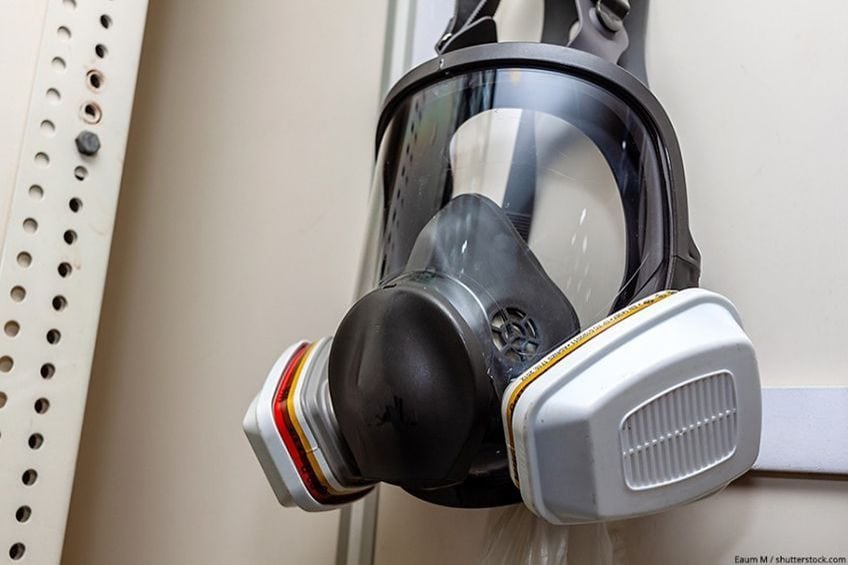
These strippers are best for thick paint layers, more detailed surfaces and furniture as well as doors. Another thing to bear in mind is that this kind of paint stripper should never remain on the surface for longer than necessary as it can cause damage to the surface below. You should also use a mild acid wash when you are done with the stripper. A simple vinegar and water mix is perfect and will help neutralize the surface. It will also help protect the substrate below from any further damage occurring.
Using a Solvent-Based Latex Paint Remover
Solvent-based latex paint removers will not cause damage to the surface underneath, which is what makes them a popular choice when compared to caustic paint strippers. These solvents start working quickly and are relatively user-friendly. However, the fumes released by solvent paint strippers are quite toxic and can pose a health risk.
Some products of this nature sometimes also contain carcinogenic substances, so they should only be used in extreme cases and with extreme care.
Safety is very important, and you should be fully protected with a mask, goggles, and gloves while working in a room with proper air circulation. Under no circumstances should you ever use solvent paint remover near a flame or heat source.
Cleaning Latex Paint With Tools
This option is far better for your health but will require some strength and elbow grease as you will have to physically remove the latex paint. Some tools you may need for this kind of latex paint removal include scrub brushes, stripping pads, paint scrapers, sandpaper, and sandblasting. You could also use some eclectic tools to help get the job done faster, such as an electric sander.
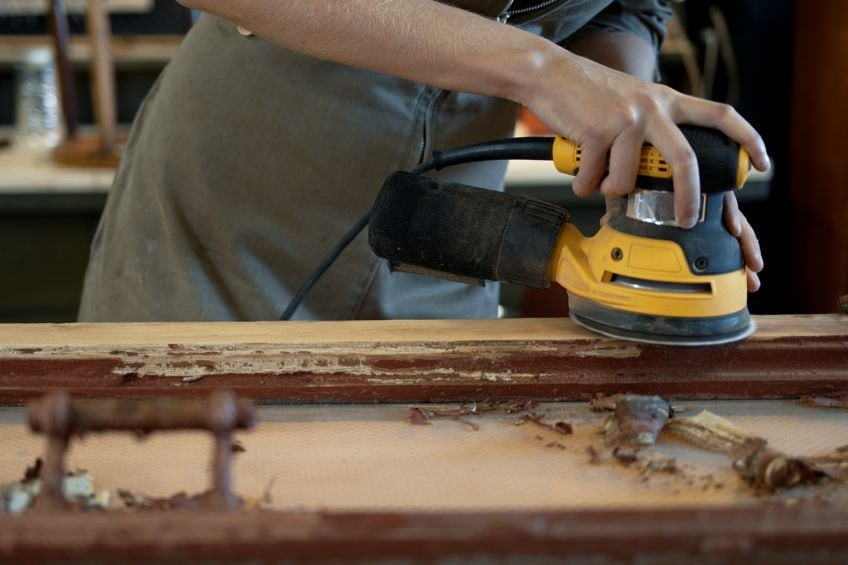
Like we mentioned, this option is certainly far better for your health, but you will need some muscle to get the job done properly! Another thing to consider is the possibility of causing damage to plaster or drywall by being too rough. Should you be removing old lead paint, using tools to remove latex paint is not advised, as it is quite toxic to breathe in any lead paint particles. If you do however decide to use this method, remember to be safe by using a proper mask and eye protection.
Using Vinegar as a Latex Paint Stripper
Not just for the kitchen! Vinegar has so many wonderful uses, especially with DIY projects, and yes, even for latex paint removal! This product is by far a more affordable and safer alternative to harsher chemical paint strippers. Heat the vinegar on the stove in a saucepan or in the microwave, do not allow it to boil, it should just be warm. Once heated, you can dip a cloth or a sponge and apply it to your painted surface. Allow it to sit for around 15 minutes and then check to see if you have any paint lifting. If not, you may want to apply some more and wait another 15 minutes.
When you can see the paint starting to lift, use a scraper to scrape the paint off and then wipe it with a cloth.
Using Heat as a Latex Paint Remover
Another way to remove latex paint is to use heat. Using heat can soften the paint, making removal by scraping a lot easier. Remember, heat does not mean an open flame! Always use a heat gun or another tool with an electric element, if you use an open flame, you run the risk of a fire, as the paint is often flammable. Ensure that you keep the heat from your heat gun moving across your painted surface for the best possible results. Remember to be safe and not to burn yourself in the process!

Latex Paint Strippers With Fewer Toxins
The world of DIY grows daily, and, thankfully, products exist to make life a whole lot easier. Paint strippers were always highly toxic, which are terrible for your health and the environment. Thanks to modern innovation, more eco-friendly options are now easily available. These latex paint strippers are often made from soybean oil and thanks to their low volatile organic compound (VOC) levels, they are a much safer choice. What makes these kinds of paint strippers more appealing is that they are not as flammable as regular options. Unfortunately, they do sometimes need more time and more applications to work properly.
Using a paintbrush, you can apply the paint stripper onto the painted surface and allow it to sit, preferably covered, for a few hours, if not longer. The gel consistency of these paint strippers will ensure no drips and no evaporation.
Your second choice is a citrus-based paint stripper. These smell great (like oranges or lemons) as they have been created from compounds found in citrus plants. Just like the soy-bean-based strippers, the citrus latex paint removers will also take more time to work. Remember, just because this product is biodegradable, proper disposal is still important – do not chuck down your drain or into your garden!
Latex Paint Removal Using Household Ingredients
We have listed a few DIY options below, remember to test them out on a small area first. If these homemade paint removers do not work, consider using a commercial product instead.
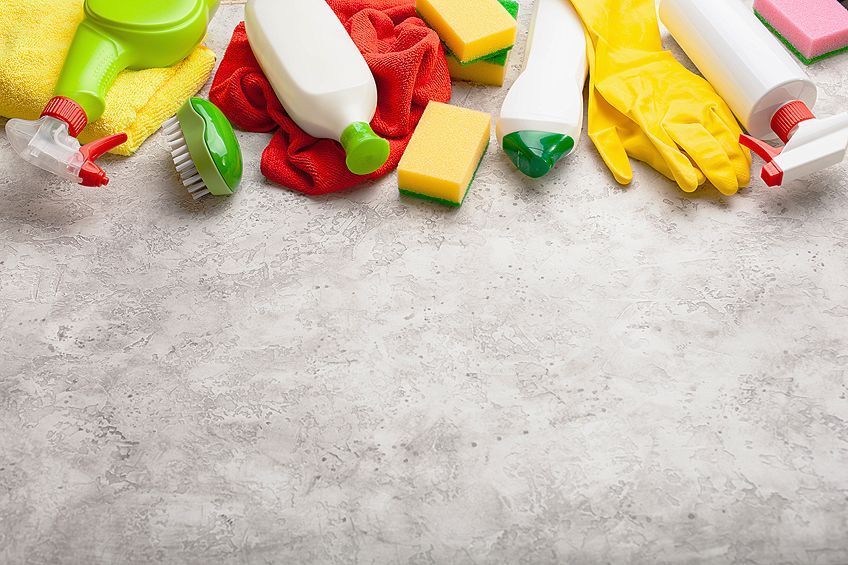
Cleaning Latex Paint With Sodium Hydroxide
Lye, as it is otherwise known, might not already be in your home, however, it is easy to find at most craft or hardware stores. Remember to use Lye with the utmost care as it can burn your skin. Wearing chemical-resistant gloves is always a good idea. Using a large bucket containing two gallons of water, and a cup of cornstarch and a cup of Lye to the mix. Now, stir using a wooden stick and let rest for a few minutes. Apply to your painted surface using a brush and allow it to sit on the surface for a couple of minutes.
Using your scraper, you should be able to lift the paint off well. Simply wipe with a clean soapy water cloth afterward.
Cleaning Latex Paint With Baking Soda
Many people have baking soda in their home already as it is so useful to have around. This is often the best method to use if you need to remove latex paint from metal surfaces or metal hardware. If you are removing paint from hardware, fill a pot with water and allow it to boil, then, add about 60 ml baking soda. Do not stir. Place your metal hardware into the pot and allow it to simmer for about 20 minutes. Once removed and cooled down, you can scrub each piece with an old toothbrush or similar.
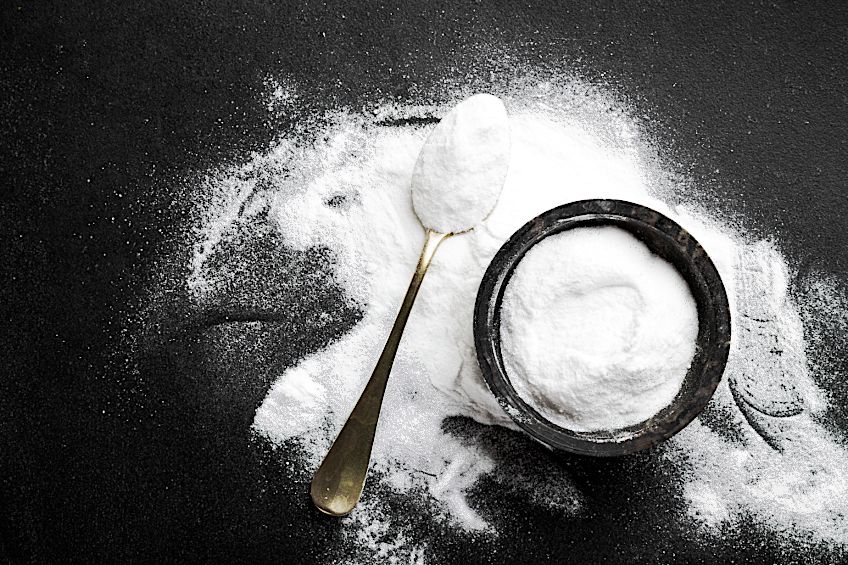
Cleaning Latex Paint With Washing Soda and Flour
Mix up equal amounts of cold water and wash soda. Next, create a separate paste using around two-thirds of a cup of flour and some warm water. Now, combine both your mixtures and apply this mixture to your painted area. You should allow this mixture to sit on the surface for about one hour.
Keep it moist using a water spray as needed.
How to Remove Latex Paint from Wood
Considering just how many different surfaces exist that one could paint, wood is by far the most common painted surface in most homes. Of course, surfaces like brick, concrete, and metal are also often painted. As we know, mishaps happen and paint can often splash or spill where it is not meant to be, such as on your furniture, floors, or clothing. It goes without saying that covering up these areas properly will help prevent unnecessary clean-ups, but sometimes spills are unavoidable.
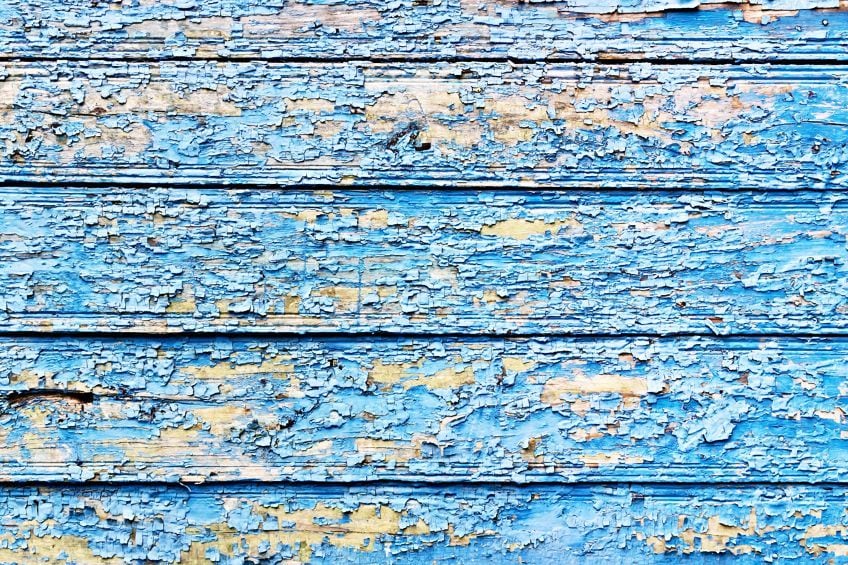
When removing paint from wood, it is very important not to damage the wood underneath the paint layer. You can try scraping some of the paint off to start. The next step would be to try using acetone or rubbing alcohol and lemon juice. Make a mixture consisting of 250 ml alcohol and add 60 ml lemon juice. Using a cloth, soak it in this mixture and then apply it to the painted surface. Now, using a brush, scrub the surface. This method might require more than one attempt. Sometimes, just wetting the painted surface can help lift the paint, if it is not too old and too stubborn. Use very hot water for this method.
How to Remove Latex Paint from Smooth Wood Surfaces
You should first try to use a sander to remove some of the paint, an orbital sander is perfect for large surface areas. Make sure to wear a mask and have a vacuum handy to suction up dust. Once you have completed this step, you can use a paint stripper, depending on your preference, you can use one with lower toxicity, remember, always use protective gear, regardless. Make sure to follow all instructions on the bottle or tub and wait the recommended time before you use your paint scraper to remove the rest of the paint.
If any paint remains, you can use more of the stripper again.
A heat gun may also be beneficial for latex paint removal, make sure you are holding the heat gun correctly and stand a good distance away because if you stand too close, you can risk damaging the wood beneath the paint. 8 to 10 inches is a good distance. Keep moving the heat gun in a circular motion and do not focus on one area for too long. You should eventually see some bubbling or wrinkling of the paint, you can now use your paint scraper to gently lift the paint from the surface.
Another method, which is a lot safer, is steam! It does however take a lot more time than most other methods. Your steamer needs to be held very close to the wall or other painted surface and kept in that position for around 20 seconds. The paint should now bubble and you can scrape it off. This is quite a long process as you can only do small sections at a time, so this is best suited for smaller surface areas.
Important Safety Tips When Using Latex Paint Remover
When it comes to working with things like paint and the solvents or chemicals involved with that, following all safety tips is very important. Remember to always try to find out exactly what paint was used before you attempt to strip it.

Older houses often were painted with lead-based paint, and these paints are highly toxic, you do not want to breathe these particles in. You should be able to purchase a testing kit that can confirm if the paint does in fact contain lead. Here are a few other safety tips:
- Wear a respirator mask
- Goggles/eye protection
- Protective latex gloves
- Wear old clothing you do not mind spills getting on to
- Only work in well-ventilated and well-circulated areas
Your Guide to Removing Latex Paint Stains
Painting often comes with accidental spills, hands, clothing, or carpet are often the victims. Here are our suggestions for removing latex paint from these three items, should the need arise.
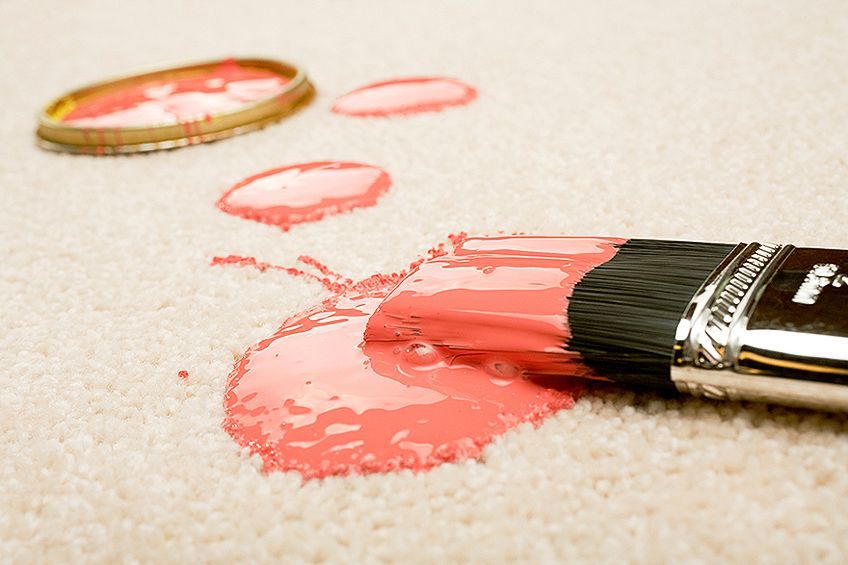
Removing Latex Paint From Skin
Hot water is often all you need to get latex paint off your skin or hair. A soak in a hot bath usually does the truck. Some soap is probably necessary as well. Of course, using gloves and keeping your hair tied up is the best way to prevent ever getting paint onto your skin in the first place.
Some rubbing alcohol-soaked into cotton balls will surely remove any stubborn paint spots on your skin.
Removing Latex Paint From Carpet
If you have spilled paint on a carpet, it can be quite daunting, especially once the paint has set into the carpet fibers. A professional carpet cleaner might be your best option at this point as it can be very difficult to remove without damaging the carpet. If it is only a small spill, you may be able to get the latex paint out on your own.
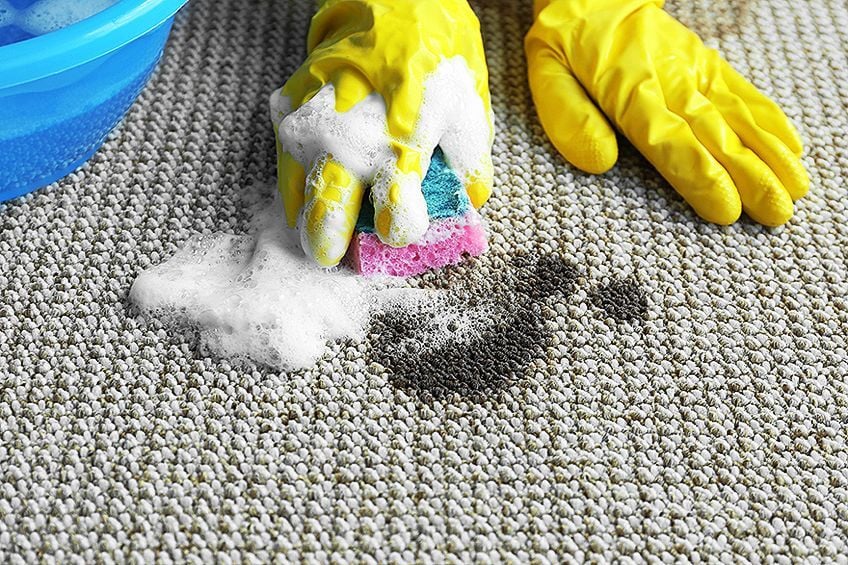
Using some warm water and liquid soap mixed into a bowl, use a damp cloth and dab onto the paint spill. Do not rub the area as you will spread the paint and damage fibers within the carpet. Let your soap mixture dry and repeat the process if the paint will not come off after the first try. Here are some other ideas you could give a try:
- Acetone
- Lacquer thinner
- Goof-off
Removing Latex Paint From Fabric
Stating the obvious. It is always best to wear old clothing that will not need cleaning should you have a spill. Nonetheless, sometimes we do have an accident and need to do an emergency spill on an item of clothing that needs to be cleaned. It is advised to move quickly to wash the item. If the paint has dried, removal will be a lot more difficult and a clothing cleaning professional might be your best option.
Acetone is often a good method for removing paint from clothing items. Just dampen a cloth with water, dab it onto the paint stain before using some acetone to saturate the area that has been stained with paint.
Rub the area against itself before using an old toothbrush or similar to help lift the paint. If you need some more acetone, you can apply more at this stage. The clothing should be rinsed off with warm water before washing in the machine in a warm wash setting. Once your clothing item has been rinsed. A nice lather of soap and a sponge may also do the trick before tossing your clothing into the washing machine. Here are a few more ideas to try:
- Hairspray
- A hand sanitization product
- Paint thinner
- Rubbing alcohol or acetone
- Goo Gone or Goof Off
- Duct tape only for dry paint
- A paint scraper
Hints and Tips for Latex Paint Removal
There are times where even the best of the best latex paint stripper is not as effective as you have hoped, leaving behind some stubborn paint areas. If you do find yourself in this situation, we have listed a few suggestions and hints to help you along the way!
- If you want the best results from your commercial paint remover, read the instructions carefully.
- Keep your eyes and mouth covered and protected with the correct gear, and always wear gloves for protection.
- If you are concerned about toxic fumes and chemicals, choose a non-toxic or eco-friendly product for your latex paint removal.
- A scraper will come in handy, even when using a chemical latex remover.

- Paint remover is not something to skimp on, so use it liberally. The more you use, the higher the chance of your paint removing properly.
- When working outside, cover your plants with a tarp.
- If you opt for a non-toxic latex paint remover, you need to be more patient as many will need more time to work, but that does not mean the end result will not be as effective as a toxic chemical remover.
While yes, latex paint may appear to be a difficult thing to remove, there are so many different methods to try until you find the best one for your project. We are certain that after reading this article, you will be very well informed of all the options available to you! Happy paint stripping!
Frequently Asked Questions
How to Remove Latex Paint That Is Still Wet?
If your paint is still wet but needs removal or a clean-up, the best advice would be to clean it immediately. You could use a paint scraper or even some hot soapy water at this point. A good ratio would be a teaspoon of liquid soap to one cup of hot water. It is also recommended to use a spray bottle to apply this mixture to the area that needs cleaning or dabbing with a damp cloth. A wet and dry vacuum cleaner can also do the job nicely, especially on a large flat surface. A little bit of denatured alcohol and a cloth can do wonders too. Make sure to wipe down the surface with a clean cloth and water when done.
Is Rubbing Alcohol an Effective Method of Latex Paint Removal?
Rubbing alcohol is often one of the best ways to get paint off of your wall or surface, cotton wool balls soaked in the alcohol and dabbed onto your window, mirror, or even clothes is an excellent removal method.
Can You Use Goo Gone on Latex Paint?
Goo Gone is a good option for latex paint removal. Just dab some on your painted area and clean with a cloth. Goo Gone also has a special latex paint cleaning produced, especially for this purpose! Spray some onto your latex paint, wet or dry, and you should be able to remove the paint efficiently.
Is Acetone an Effective Method of Latex Paint Removal?
Yes, not only is acetone often already a home item and on hand. It can be used to remove latex paint from most surfaces. Testing it on a small inconspicuous area is however recommended. Once applied, you can remove the acetone with a cloth. You may need to apply again until you have achieved the desired result.
How to Remove Latex Paint From Glass?
One of the best ways to remove latex paints from glass surfaces is chemical-free! A sharp blade works very well, take caution not to scratch your glass! The best advice here is to spray a bit of Windex first and then use your blade to scrape before wiping the surface clean. Some acetone or mineral spirits will help with any stubborn areas.

